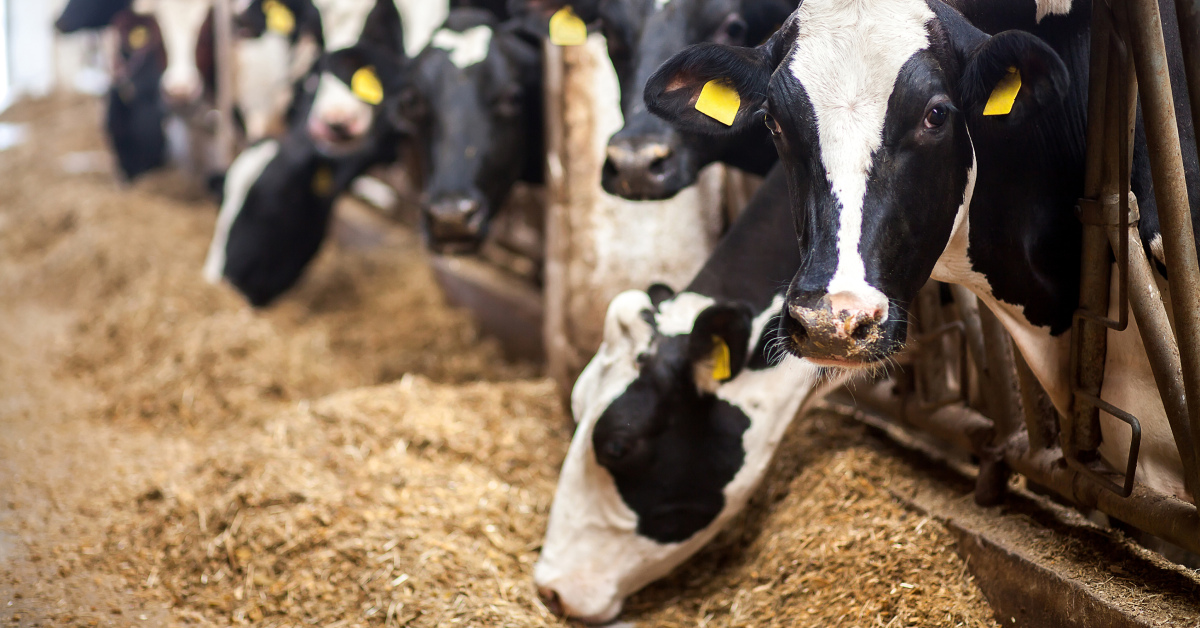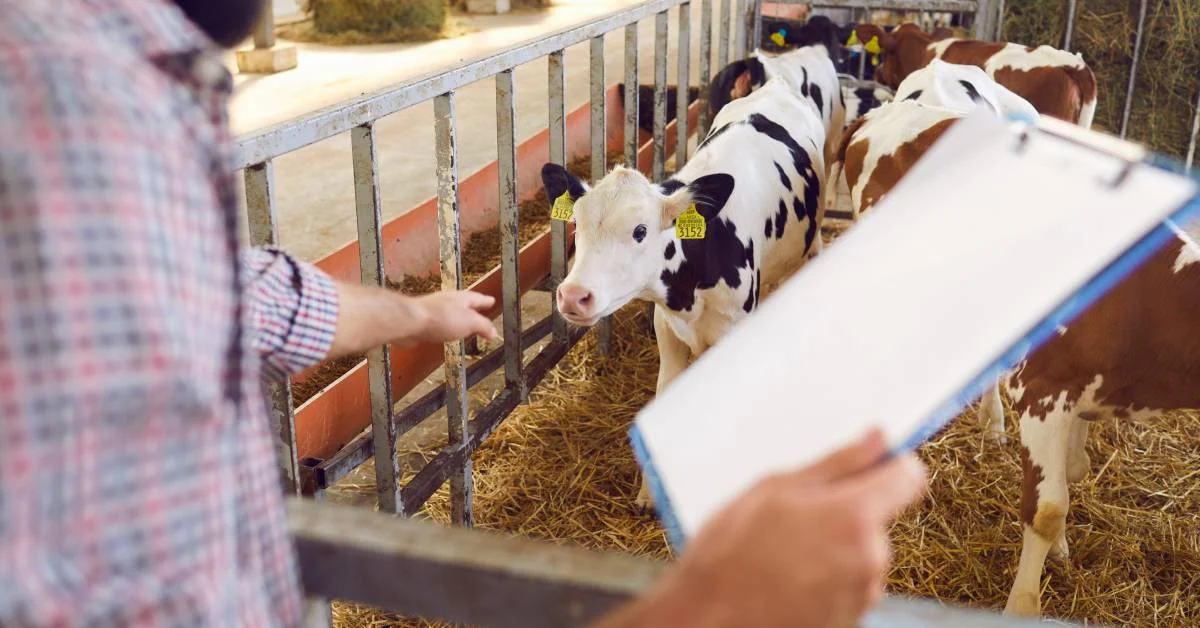Maintaining udder health in dairy cows is essential for their productivity and well-being. Any decision that affects udder health results in low milk production, heavy veterinary bills, and poor animal welfare, which affect the financial stakeholders in the dairy business.
Poor feeding systems also remain one of the most significant contributing factors to udder health in dairy cows. Lack of balanced feed or inadequate nutrients in the feed provided to the cow may result in a weakened immune system, which may cause the udder to get infected, such as during mastitis.
Hence, poor-quality feed may cause metabolic imbalances and predispose dairy cows’ udder health to more adverse conditions. New ways of dairy management have been introduced, primarily through the application of management software in the dairy industry.
The industry now pays close attention to the health of dairy cows, including real-time monitoring and data analysis. These facilities provide essential information on feed ration, consumption, and factors relating to cow health to enable the farmers to make proper decisions that can help prevent issues relating to udder health in dairy cows.
Precision feed technologies allow for accurate selection of individual diet intake for each cow, improving udder health in dairy cows and contributing to the cows’ well-being. Keep reading this blog to understand the relationship between feed quality and udder health in dairy cows.
What is Udder Health?
Milk quality is determined by various factors involving the biological system of the mammary gland’s overall health, referred to as udder health in dairy cows. The gland is located on the cow’s abdomen below the spine and consists of four teats, each containing several lobes and alveoli.
However, its major role is to secrete, accumulate, and eject milk through ducts and vessels during the nursing period. The udder structure is designed specifically to facilitate lactation, and the muscle and ligament system in the udder helps with the letdown process.
The importance of udder health in dairy cows cannot be overemphasized, as they are prone to some diseases, especially mastitis, one of the most costly and widespread diseases in dairy cows globally.
Mastitis is an inflammation of the udder characterized by a reduction in milk production, a change in milk composition, and poor milk quality, including higher somatic cell and bacterial counts.
Another general udder disease is edema, swelling due to fluid in the udder tissue caused by improper draining or problems in the circulatory system. This situation may be uncomfortable for the cow and potentially interfere with milk letdown, forcing a decline in milk yield.
For instance, the disease of mastitis alone leads to significant economic losses. More specifically, costs range from $300 to $1000 for each cow because of the poor yield, expenses included in treatments, milk dumping, and efforts to manage the disease.
Moreover, information regarding udder health in dairy cows monitoring programs indicates the differing prevalence percentages of mastitis and other udder diseases within several types of dairy production and geographical domains.
This emphasizes the consequent call for proper management approaches toward reducing the effects on overall dairy herd yields and profitability.
The Role of Feed Quality in Udder Health
Feed quality is a vital input in udder health in dairy cows since it determines the extent to which the cows’ nutritional needs are met and, consequently, the efficiency of udder function.
Proteins, vitamins, and minerals are vital nutrients that keep dairy cows’ udders healthy on farms. Protein helps in tissue remodeling and an effective immune response, while vitamins and minerals are cofactors in several metabolic activities relevant to the udder’s overall health.
Impact of Poor Feed Quality on Udder Health and Milk Production
Feeding low-quality feed will severely impact the health of the udder and milk production of the dairy cows. For instance, mycotoxins, toxic compounds from fungi that contaminate animal feed, affect udder health in dairy cows.
Research has revealed that even low levels of mycotoxins like aflatoxins and ochratoxins are scientifically proven to suppress cows’ immune systems, making them prone to udder infections like mastitis.
Furthermore, mycotoxins are well-documented to affect milk yield and quality, a vital issue in milk production. Poor-quality feed can also affect dairy cows, leading to poor udder health and low milk production.
The absence of properly balanced feed rich in proteins, vitamins, and minerals results in poor cow health and increased incidences of udder-related disease.
For instance, the absence of vitamin E, an antioxidant nutrient, and a deficit will make the udder tissue vulnerable to oxidative stress and inflammation and, thus, mastitis. Zinc and selenium deficiencies also lead to weaker immunity, which further impacts the cows’ ability to fight off udder infections.
Components of High-Quality Feed
Characteristics of High-Quality Feed
- Nutritional Balance: Unlike conventional feeds, conventional proteins include fats and carbohydrates, vitamins, and minerals, which in turn meet the dietary requirements of the dairy cow in different production cycles.
- Absence of Contaminants: The feed does not include germination and toxic compounds like mycotoxins, pesticide residues, heavy metals, and pathogenic microorganisms that harm the welfare of udder health in dairy cows.
- Palatability and Digestibility: An easily fermentable and well-degradable diet helps in voluntary feed intake throughout the day and, as studies have shown, leads to better rumen health and more efficient digestion of nutrients in dairy cows.
- Consistency and Freshness: Therefore, control over the quality and the freshness of the feed ensures minimal spoilt feed, which maintains the health status of the cows, as well as the productivity level of the cows.
- Source and Production Practices: Regarding the source, only acceptable feed mills are used, and the feed is sufficient or mixed well enough to preserve its value and avoid feed contamination.
Importance of Consistent Feed Quality and Its Impact on Udder Health
For efficient milk production, udder health in dairy cows should be preserved, and to do so, feed should be of good quality and quantity.
Many factors that change, either a little or drastically, such as feed characteristics or feed components, may disturb the metabolic equilibrium of the cow and lower the ability of the udder to fight infections such as mastitis.
In this case, by improving the quality and availability of feed, dairy farmers can achieve the best udder health in dairy cows, milk production stability, and animal welfare among their herds.
How to Monitor and Manage Feed Quality?
Feed quality control entails observation and control measures about feeding dairy cows with balanced and quality feed at the right time and proportion. Here are some critical steps to effectively monitor and manage feed quality:
- Regular Feed Testing: Feed samples should undergo laboratory analysis daily/weekly to check their nutrient content and look for toxins or poisons. Therefore, proximate analysis, NIR spectroscopy, or wet chemistry can be used to determine accurate feed composition.
- Quality Assurance Protocols: This means that feed quality assurance should start from the supply chain, from the raw materials producers through to suppliers, storage facilities, and distributors. This entails using a reliable source of feed, proper storage of feeds so as to avoid contamination and the growth of unwanted microorganisms during storage, and feed handling coupled with high levels of hygiene.
- On-Farm Monitoring: Some of the ways that can be employed while monitoring the feed quality on the farm include using readily available portable kits as feed test kits. Some of the aspects operated usually include moisture content, mold concentrations, and mycotoxins to evaluate the quality and safety of feed and aeration.
- Record Keeping: Record feed sources used, batch numbers used, test results of feed, and feeding practices. This information assists in monitoring feed quality from one period to another. Observe changes while or when they occur or even when there are constant changes in feeding schedules.
- Feed Management Software: Integrate feed quality management, which can be offered as special modules for the defined dairy management software. Such software can help manage feed inventory, feed production, animal feed intake monitoring, and feed efficiency monitoring of the various production metrics in real time.
Best Practices for Sourcing and Testing Feed Quality
Feeding livestock is a critical element in animal husbandry, and therefore, the quality of feed is extremely important and a major factor in determining the overall health of the animals, milk yield, quality, and fertility levels, among other feed quality factors.
The following are the best practices for sourcing and testing feed quality:
- Techniques for Analyzing Feed Components: To evaluate the nutrient concentration in feed and feed quality, proximate analysis, NIR spectroscopy, and wet chemical analysis should be employed to gauge the feed value of dairy cows.
- Tools and Equipment for Testing Feed Quality on the Farm: Purchase testing kits and equipment that you can take from one place to another so that the feed sample can be analyzed quickly regarding nutrient value and the presence of some kind of poison or toxin.
Role of Dairy Management Software in Feed Quality Management
Features of Folio3 Dairy Software Cattlytics for feed monitoring:
- Nutritional Analysis: Provides tools for tracking feed composition and nutrient levels, facilitating informed feeding decisions.
- Contaminant Detection: Offers capabilities to detect and monitor contaminants such as mycotoxins, ensuring feed safety.
- Inventory Management: Helps manage feed inventory and sourcing, ensuring consistent access to high-quality feed.
Benefits of using technology to ensure high feed quality:
- Real-Time Monitoring: Enables continuous monitoring of feed quality parameters, allowing for proactive interventions to maintain udder health in dairy cows.
- Data Analytics: Analyzes feed-related data to identify trends and patterns, optimizing feed management practices for improved udder health in dairy cows and milk production.
- Streamlined Operations: Automates feed management tasks, reducing manual effort and minimizing the risk of human error in feed preparation and monitoring.
What are the Preventive Measures for Udder Health in Dairy Cows?
Preventive measures for udder health encompass a range of strategies to minimize the risk of udder infections and promote overall udder health in dairy cows. These measures include:
Hygiene Protocols
Maintaining a clean environment in the barn, including clean and dry bedding, helps reduce the risk of bacterial contamination and udder infections.
Strict milking hygiene practices, such as cleaning and sanitizing milking equipment before and after each use, prevent the introduction of pathogens to the udder during milking.
Nutritional Management
A balanced diet of essential nutrients supports immune function and udder health in dairy cows. Regularly analyzing feed components ensures cows receive adequate nutrition and helps prevent nutritional deficiencies or imbalances.
Monitoring and Early Detection
Regular health checks, including visual inspections of the udder and monitoring of milk quality, allow for early detection of udder health issues. Monitoring somatic cell counts in milk can help identify mastitis early on.
Environmental Management
Proper ventilation in barns and milking parlors reduces moisture and humidity levels, which can contribute to bacterial growth and udder infections.
Comfortable housing conditions with adequate space and access to clean water reduce stress and support overall cow health.
Routine Vaccination and Health Management
Vaccination programs against common udder pathogens help prevent infections. Working closely with a veterinarian to develop proactive health management plans tailored to the herd’s specific needs is essential.
Strategies for Feed Management
Regular Feed Analysis and Adjustments
Conduct routine analyses of feed components to ensure nutritional balance and detect contaminants or deficiencies. Based on the studies, feed rations should be adjusted as needed to meet the specific dietary requirements of dairy cows.
Use of Supplements and Additives
Incorporate supplements such as vitamins, minerals, and probiotics into feed formulations to enhance nutritional quality and support udder health. Additives like yeast-based products can also improve rumen function and reduce the risk of udder infections.
Implementation of Feed Management Protocols
Utilize dairy management software to establish and enforce feed management protocols, including feed formulation, inventory management, and monitoring of feed quality parameters. This ensures consistency and accuracy in feed preparation and distribution.
Role of Hygiene and Milking Procedures
1. Maintaining Cleanliness
Practice rigorous hygiene protocols in feed handling, storage, and distribution to prevent contamination and spoilage. Clean feed storage areas regularly and ensure proper sanitation of feeding equipment to minimize the risk of introducing pathogens into the feed supply.
2. Optimizing Milking Procedures
Implement strict milking hygiene practices to prevent udder contamination and reduce the risk of mastitis. Thoroughly clean and sanitize milking equipment between each cow, and practice proper teat preparation and post-milking teat disinfection to maintain udder health.
Integrating Dairy Management Software for Optimal Udder Health
Integrating ERP for dairy management software into a dairy farm’s operations can revolutionize feed quality monitoring and optimize udder health. Let’s delve into how dairy management software, like Agtech Folio3 dairy management software Cattlytics, can achieve this:
Streamlining Feed Quality Monitoring
Feed Analysis
Agtech Folio3 Cattlytics offers robust features for feed analysis, enabling farmers to assess the nutritional content of their feed accurately.
Through detailed feed analysis, farmers can ensure the feed’s composition meets the nutritional requirements of their cows, promoting optimal udder health and milk production.
Nutrient Tracking
The software facilitates nutrient tracking, allowing farmers to monitor individual cows’ intake of essential nutrients.
Farmers can adjust feed rations by tracking nutrient intake, ensuring cows receive nutrients for udder health and overall well-being.
Alert Systems
Agtech Folio3 Cattlytics is equipped with alert systems that notify farmers of any deviations in feed quality or nutritional imbalances.
Timely alerts enable farmers to proactively address potential issues before they escalate, minimizing the risk of udder health issues.
Integration with Other Farm Management Systems
Comprehensive Health Monitoring
Agtech Folio3 Cattlytics integrates with other farm management systems, such as health monitoring and milking systems.
The integration allows for comprehensive health monitoring, providing farmers real-time insights into udder health indicators and overall herd well-being.
ROI of Investing in Dairy Management Software
Optimized Production
Dairy management software like Agtech Folio3 Cattlytics maximizes milk production by streamlining feed quality monitoring and promoting optimal udder health.
Increased milk production translates to higher profitability for dairy farms, delivering a significant return on investment.
Reduced Veterinary Costs
Proactive monitoring and management of udder health through dairy management software lead to reduced instances of udder infections and health issues.
Lower veterinary costs result from decreased incidences of illness, contributing to improved profitability for dairy operations.
Conclusion
The significance of feed quality in preserving udder health cannot be overstated. Optimal nutrition is paramount for dairy cows to maintain robust udder function, ensure high milk production, and support overall well-being.
Poor feed quality, contamination with toxins, or lack of essential nutrients can jeopardize udder health, reducing milk yield and increasing susceptibility to infections. In modern dairy farming, technology is pivotal in revolutionizing traditional practices.
Dairy management software, exemplified by solutions like Agtech Folio3 Cattlytics, embodies the marriage of data-driven insights and agricultural expertise.
Such technologies empower farmers with real-time monitoring, precise analytics, and proactive management tools, enabling them to make informed decisions that optimize feed quality and enhance udder health.
FAQs
How Does the Quality of the Feed Impact Milk Production?
When cows receive balanced nutrition, including adequate proteins, carbohydrates, vitamins, and minerals, they produce more milk of higher quality. Conversely, poor-quality feed or nutritional imbalances can decrease milk yield and compromise udder health.
What are the Effects of Feed Restriction on Dairy Cow Milk Production?
Feed restriction can have detrimental effects on dairy cow milk production. When cows do not receive enough feed to meet their nutritional needs, their milk production decreases.
What Qualities are Preferred in the Dairy Udder?
The ideal dairy udder exhibits several vital qualities to support efficient milk production. These include good udder capacity, adequate size, and depth to accommodate milk volume.
What are the Factors Affecting Milk Quality in Dairy Cows?
Several factors influence milk quality in dairy cows, including nutrition, genetics, udder health, and management practices.
How Does the Use of Dairy Management Software Contribute to Udder Health?
Dairy management software is crucial in promoting udder health by facilitating comprehensive monitoring and management of various factors affecting dairy cows’ well-being.







